Today’s Current Affairs: 29th July 2025 for UPSC IAS exams, State PSC exams, SSC CGL, State SSC, RRB, Railways, Banking Exam & IBPS, etc
Table of Contents
SPARSH (System for Pension Administration Raksha):

Many ex-servicemen say the SPARSH (System for Pension Administration Raksha) has only added to their troubles — from inaccessible interfaces to endless corrections that never seem to stick.
- It is an initiative of the Ministry of Defence, Government of India.
- Objective is to Meeting the pension sanction and disbursement requirements for Armed Forces Army, Navy, Air Force and Defence Civilians.
- It is administered by the Defence Accounts Department through the Principal Controller of Defence Accounts (Pensions), Prayagraj and shall cater to all the three Services and allied organisations.
- Without relying on a third-party intermediary, this web-based system handles pension claims, and deposits pension payments into the bank accounts of defence pensioners.
- It is a centralized sanction, claim and pension disbursement system with easy validation and rectification of data through self-verification.
- It uses a digital process for pensioner identification, removing the requirement of multiple visits by pensioners to the pension offices.
- The defence pensioner will be given a completely transparent view of his pension account through this platform.
- It will capture and maintain a complete history of events and entitlements the pensioner right from the date of commencement of pension to the date of cessation of pension due to his/her last eligible beneficiary.
Indian Computer Emergency Response Team:

The Indian Computer Emergency Response Team (Cert-In) recently made it mandatory for private and public-sector organisations that own or operate digital systems, processes, or infrastructure to undergo a comprehensive third-party cybersecurity audit at least once a year.
- It is the national nodal agency for responding to computer security incidents as and when they occur.
- It is a functional organisation of the Ministry of Information & Electronics Technology, Government of India.
- Objective is Securing Indian cyberspace.
- The constituency of CERT-In is the Indian cyber community and Indian cyberspace.
- CERT-In has been designated under Section 70B of the Information Technology Act, 2000, to serve as the national agency to perform the following functions in the area of cyber security:
- Collection, analysis, and dissemination of information on cyber incidents.
- Forecasts and alerts of cybersecurity incidents.
- Emergency measures for handling cybersecurity incidents.
- Coordination of cyber incident response activities.
- Issue guidelines, advisories, vulnerability notes, and white papers relating to information security practices, procedures, prevention, response, and reporting of cyber incidents.
- Such other functions relating to cyber security as may be prescribed.
- To perform these functions, CERT-In is empowered to call for information and issue directions to service providers, intermediaries, data centres, body corporates, and any other person.
- CERT-In provides services to organizations in the Government, Public, and Private sectors. In addition, CERT-In provides services to individuals and home users as well.
- CERT-In collaborates with international counterparts to share information regarding emerging threats, vulnerabilities, and malware.
- Disclosure of information will be followed in accordance with Indian Constitutional laws.
Exercise Drone Prahar:
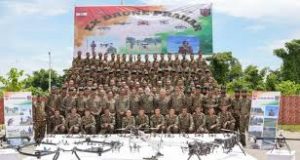
The Indian Army recently held Exercise Drone Prahar in Arunachal Pradesh.
- It is a high-tech military drill conducted by the Indian Army to validate the integration of drone technology into tactical battlefield operations.
- It was conducted at the military station at Rayang in Arunachal Pradesh’s East Siang District.
Carried out under realistic operational conditions, the exercise demonstrated the effective use of drones for intelligence, surveillance, and reconnaissance, as well as real-time sensor-to-shooter coordination and precision targeting. - The aim was to enhance command reach and improve situational awareness for tactical commanders by employing layered surveillance and supporting dynamic decision-making on the ground.
- The exercise also evaluated critical aspects necessary for seamless drone integration in battlefield scenarios.
- This included testing of airspace deconfliction, ensuring secure communication channels, and establishing coordination protocols among various arms and services.
Veer Parivar Sahayata Yojana:

The National Legal Services Authority (NALSA) recently launched ‘Veer Parivar Sahayata Yojana’, a scheme to strengthen legal aid for defence personnel and their families.
- It is a joint initiative of the National Legal Services Authority (NALSA), the Kendriya Sainik Board (KSB), Rajya Sainik Boards (RSBs), and Zilla Sainik Boards (ZSBs), under the Department of Ex-Servicemen Welfare, Ministry of Defence.
- Objective is Providing free and competent legal services to defence personnel, ex-servicemen, and their families.
- It will be implemented through a nationwide network of Legal Services Clinics established across Rajya and Zila Sainik Boards in all states and union territories.
- These clinics will operate in close collaboration with the Department of Ex-Servicemen Welfare, Ministry of Defence and respective Directorates of Sainik Welfare.
- The scheme is especially relevant for personnel posted in remote locations who often find it difficult to appear in court or follow up on legal matters involving family property, land disputes, or domestic issues.
- Through this initiative, NALSA will facilitate proper legal representation in such cases across the country.
- Panel lawyers and paralegal volunteers of the legal services authority will provide free legal aid to soldiers.
- The support will also extend to paramilitary personnel, including those from the Border Security Force (BSF), Central Reserve Police Force (CRPF), Indo-Tibetan Border Police (ITBP), and others who serve in similarly isolated and high-risk conditions.
Deep-Brain Stimulation:
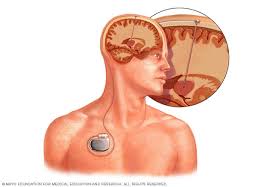
More than 1.6 lakh people worldwide have received Deep-Brain stimulation (DBS).
- It is a medical technique where doctors implant electrodes deep inside specific areas of the brain to treat certain disorders.
- These electrodes are connected by wires to a small device, similar to a heart’s pacemaker, which is usually placed under the skin in the upper chest.
- The device sends controlled, mild electrical impulses to targeted brain regions, helping adjust abnormal brain activity or chemical imbalances.
- DBS is most commonly used for movement disorders, especially in people with Parkinson’s disease, essential tremor, and dystonia, whose symptoms no longer respond well to medication.
- It has also been approved for some psychiatric conditions like obsessive-compulsive disorder, and is being studied for severe depression and epilepsy.
- DBS works by modifying how groups of neurons talk to each other. Many of these disorders involve faulty electrical signals in the brain.
- Delivering electrical pulses through DBS can interrupt these erratic signals, helping reduce symptoms such as tremors or muscle stiffness.
- One advantage of DBS is that, unlike brain surgery that destroys tissue, its effects are reversible: if you turn off the device, the stimulation stops.
- It is believed to help normalise disrupted brain circuits at both the cellular and network levels.
4th edition of World Food India 2025:

The Ministry of Food Processing Industries will organise the 4th edition of World Food India 2025 at Bharat Mandapam in New Delhi from 25th of September this year.
- The first edition was held in 2017, followed by a successful second edition in 2023 and the third in 2024.
- It is a gateway to the Indian food economy and an opportunity to showcase, connect, and collaborate.
- It is organized by the Ministry of Food Processing Industries, Government of India,
- It is the largest gathering of investors, manufacturers, producers, food processors, policy makers, and organizations from the global food ecosystem.
- It aims to provide opportunities for both investment and trade in the food processing sector for leading Indian and international companies.
- WFI serves as a premier platform for stakeholders from across the world to connect, collaborate, and explore opportunities in India’s dynamic food processing landscape. Building on the remarkable success of previous editions,
- Theme of WFI 2025: “Processing for Prosperity”
- The food processing sector is a priority under the Make in India initiative, with the Ministry of Food Processing Industries implementing schemes to attract investment and develop infrastructure.
- Mega Food Parks with essential utilities and common processing facilities are being established in agriculturally rich areas, offering a plug-and-play model for entrepreneurs.
TRACERS Mission:

NASA’s twin TRACERS satellite was launched to study magnetic reconnection and how solar activity affects near-Earth atmosphere.
- The Tandem Reconnection and Cusp Electrodynamics Reconnaissance Satellites (TRACERS) will help understand magnetic reconnection and its effects in Earth’s atmosphere.
- It will fly in low Earth orbit through the polar cusps, funnel-shaped holes in the magnetic field, to study magnetic reconnection and its effects in Earth’s atmosphere.
- This twin satellite system is set to study the constant stream of solar wind and charged particles flowing from the Sun, which interacts with Earth’s magnetic shield, also known as the magnetosphere.
- The data gathered from TRACERS will help scientists improve space weather forecasting and better protect critical technology here on Earth.
New Wasp Species:
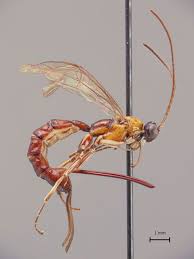
Scientists from the Zoological Survey of India (ZSI) have announced the discovery of four new species of spider-egg parasitic wasps, all from the State of West Bengal.
- The new species of parasitoid wasps belonging to the genus Idris(Hymenoptera: Scelionidae).
- These tiny wasps Idris bianor, Idris furvus, Idris hyllus, and Idris longiscapus— were collected from agroecosystems and semi-natural habitats across West Bengal.
- These extremely small microscopic wasps belong to the genus Idris Förster and are known for laying their eggs inside spider egg sacs.
- These are primary egg parasitoids of jumping spiders (Salticidae).
- They exhibit an interesting behaviour pattern, the scientists noted that instead of just one wasp growing inside each spider egg sac, many baby wasps grow together and are called “gregarious parasitism”.
- Parasitoid wasps like Idris play a key role in regulating spider populations and maintaining arthropod community balance.
Exercise Bold Kurukshetra 2025:

The 14th edition of the Exercise Bold Kurukshetra 2025, is set to commence at Jodhpur and will continue till 04 August 2025.
- It is a joint military Exercise conducted between India and Singapore.
- It was first conducted in 2005, this exercise underscores the strong and long-standing bilateral defence relationship between both countries and enhances cooperation between the two armies.
- The exercise will witness the participation of the 42 Singapore Armoured Regiment of the 4 Singapore Armoured Brigade and the Indian Army’s Mechanised Infantry Regiment.
- The exercise will be conducted as a Table Top Exercise and Computer-Based Wargame, aimed at validating operational procedures for mechanised warfare.
- The objective of the exercise is to enhance interoperability and joint training capabilities of both armies under United Nations mandate, thereby strengthening bilateral defence cooperation.
- Both defence establishments also interact regularly through high-level visits, policy dialogues, courses and other professional exchanges.
- Exercise Bold Kurukshetra 2025 will further consolidate the strong defence ties between India and Singapore and foster greater mutual understanding and collaboration at both tactical and strategic levels.
“State of the Economy” : RBI
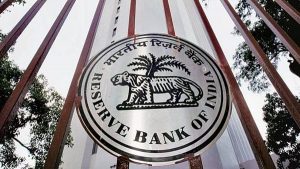
The Reserve Bank of India’s article titled “State of the Economy” offers a cautiously optimistic view of the Indian economy, amid global and trade-related uncertainties.
- Retail inflation (measured by the Consumer Price Index (CPI) fell from 5.4% in 2023–24 to 2.1% in June 2025, the lowest since January 2019.
- In June 2025, core inflationrose to 4.4% due to costlier personal care, education, and recreation, while overall inflation eased more sharply in rural (1.7%) than urban areas (2.6%).
- India recorded a current account surplus of 1.3% of Gross Domestic Product (GDP) in Q4 2024–25.
- India’s Current Account Deficit narrowed to 0.7% of GDP in FY24.
- Gross fiscal deficit (GFD) stood at 0.8% of its 2025-26 budget estimates, a significant improvement from 3.1% in 2024-25
- Till May 2025, the Centre received 21% of Budget Estimates (BE) 2025-26 of Total Receipts. Total expenditure stood at 14.7% of FY26 BE, with a notable focus on capital expenditure.
- India’s overall trade deficit narrowed nearly 30% in May 2025, mainly due to falling oil prices and strong services exports.
- Compared to May 2024, total exports in May 2025 grew by 2.8% boosted by a 9.4% rise in services exports, while total imports fell by 1%.
- India’s export performance in FY 2024–25 was driven by strong growth in sectors like coffee, tobacco, electronic goods, rice, and drugs & pharmaceuticals.
- Other sectors such as ready-made garments (RMG) of textiles, plastic & linoleum, engineering goods, and fruits & vegetables also saw positive growth.
- The US, UK, Japan, UAE, and France emerged as top export destinations during the year.
- On the import front, major sources included UAE, China, Thailand, US, and Russia.
- FDI inflows up 14% in FY25 from FY24, and 125% higher than FY14.
- The services sector led with 19% of equity inflows, followed by software & hardware (16%) and trading (8%).
- Manufacturing FDI rose by 18% in FY25 compared to FY24, Maharashtra topped with 39% of inflows, while Singapore was the largest source (30%), followed by Mauritius and the US.
- India witnessed positive net Foreign Portfolio Investment (FPI) inflows of USD 44.1 billion in FY24.
- India’s external debt rose by 10% in 2025 compared to 2024, with the debt-to-GDP ratio rose slightly to 19.1% from 18.5% FY24.
- India’s foreign exchange reserves stood at USD 696 billion as of July 2025, covering over 11 months of goods imports and 95% of external debt.
India has reduced the number of zero-dose children:
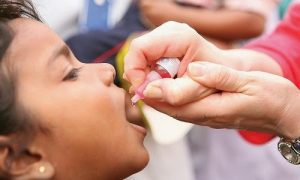
India has reduced the number of zero-dose children from 1.6 million in 2023 to 0.9 million in 2024, playing a key role in South Asia’s highest-ever immunization coverage, as reported by World Health Organization (WHO) and United Nations International Children’s Emergency Fund (UNICEF).
- Zero-dose children are those who haven’t received even the first dose of the DTP (diphtheria, tetanus, pertussis) vaccine, meaning they are never reached by routine immunization services.
- In 2024, 92% of South Asian infants received the third DTP dose highest ever, up 2% from 2023. Still, over 2.9 million children remain un- or under-vaccinated.
- India received the Measles and Rubella Champion Award in 2024 for its immunization leadership.
- The Zero Dose Implementation Plan 2024 aims to vaccinate unvaccinated children. The share of zero-dose children in India dropped from 0.11% in 2023 to 0.06% in 2024.
- Mission Indradhanush (Since 2014) has vaccinated 5.46 crore children and 1.32 crore pregnant women previously unreached or under-vaccinated.
- Through National Vaccination Day (16th March), India has maintained polio-free status since 2014.
Haridwar Stampede:
Eight people died and 30 were injured in a stampede at Haridwar’s Mansa Devi temple due to panic triggered by a rumour of a snapped electric line.A massive crowd of devotees, including children, panicked on a stairway after a rumour about an electric wire snap, leading to a crush and stampede.Local authorities (police, temple security) identify the disaster and alert emergency services (SDRF, fire brigade, medical teams).
Quick evacuation attempts begin to prevent further casualties.
Android Earthquake Alert System (AEA):
Google and UC Berkeley’s Seismology Lab have released a new global performance report of the Android Earthquake Alert (AEA) system. The system issued successful early warnings in 98 countries.
Working:
- Sensor Activation: Android phones sense initial P-waves using onboard accelerometers.
- Crowdsourcing: Data is sent to Google servers and cross-verified with signals from nearby devices.
- Real-time Processing: If confirmed, servers estimate epicentre, magnitude, and distance.
- Alert Dispatch: Warning is sent to users before S-waves hit, allowing 10–60 seconds of preparation.
Operation Mahadev:
The Indian Army, in coordination with the CRPF and Jammu and Kashmir Police, launched a high-intensity counter-terrorism mission codenamed Operation Mahadev in the Dara region near Dachigam National Park, Jammu and Kashmir. Acting on credible intelligence inputs about terrorist movement, security forces engaged in a fierce encounter on Monday, resulting in the elimination of three Pakistani terrorists belonging to Lashkar-e-Taiba (LeT).The operation was initiated after intelligence inputs indicated possible movement of militants in the Lidwas area near Harwan, located about 20 km from Srinagar city. The region, known for its rugged trekking terrain, has previously been used by militants as a hideout due to its difficult topography.
World Hepatitis Day 2025:
Every year, World Hepatitis Day is observed on 28th July to raise global awareness about the silent yet deadly liver disease, hepatitis. The day marks the birth anniversary of Dr. Baruch Blumberg, the Nobel Prize-winning scientist who discovered the Hepatitis B virus and developed the first vaccine against it. Despite being preventable and treatable, millions across the world remain affected often unknowingly making early detection, vaccination, and awareness crucial.In 2025, the campaign theme is “Hepatitis: Let’s Break It Down”, focusing on dismantling financial, social, and systemic barriers that prevent timely access to care and pushing towards the global goal of eliminating hepatitis as a public health threat by 2030.




